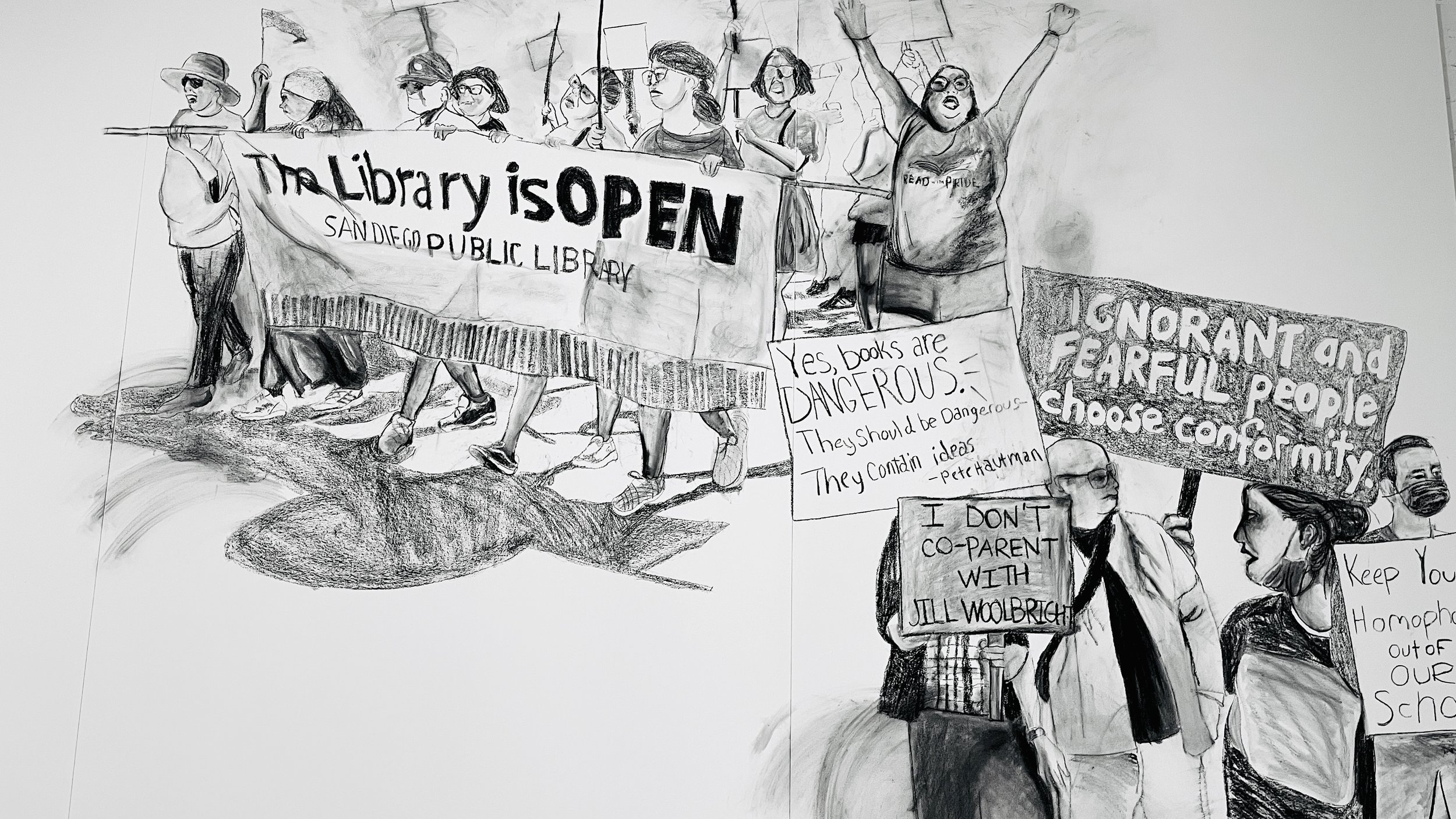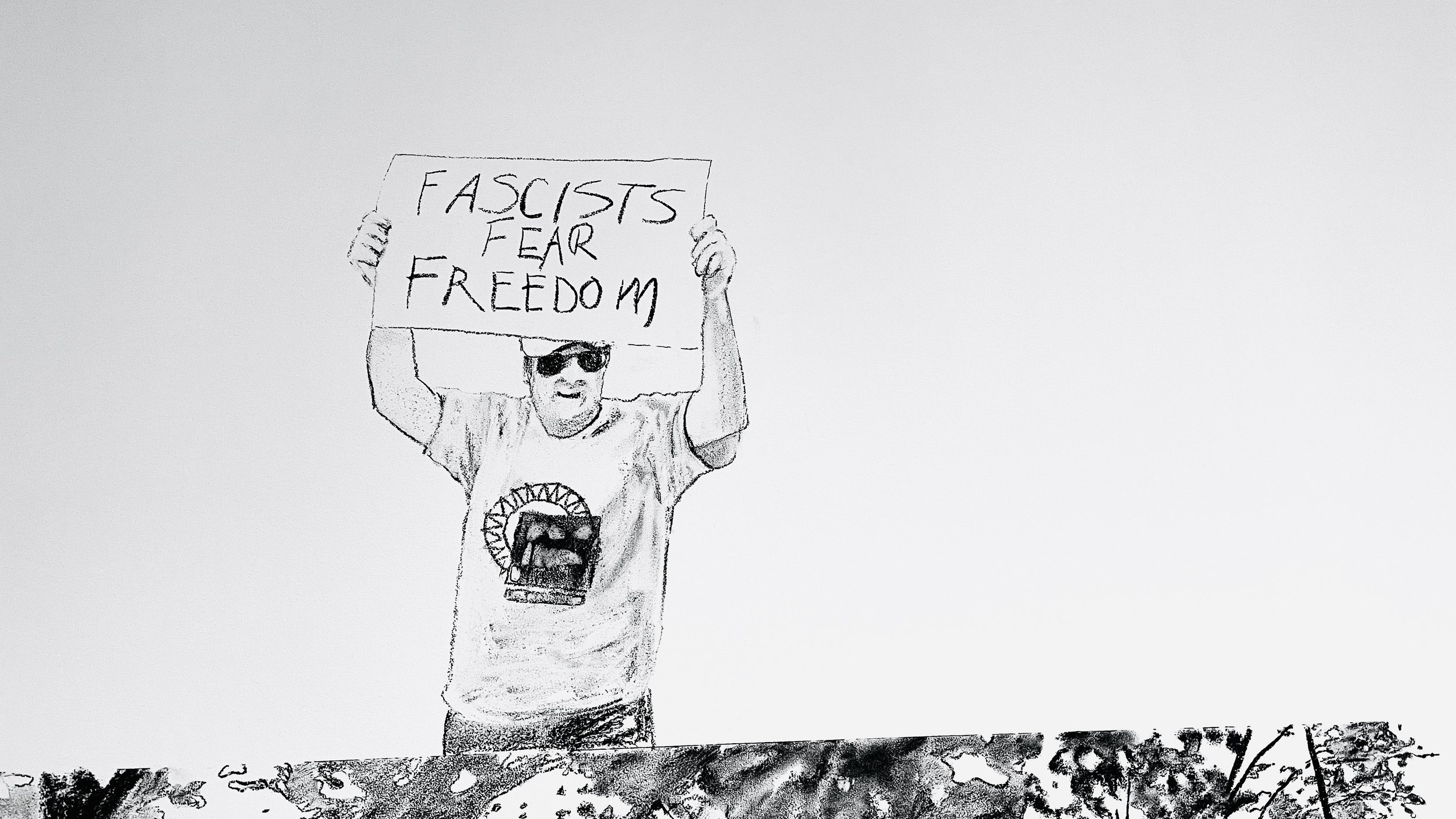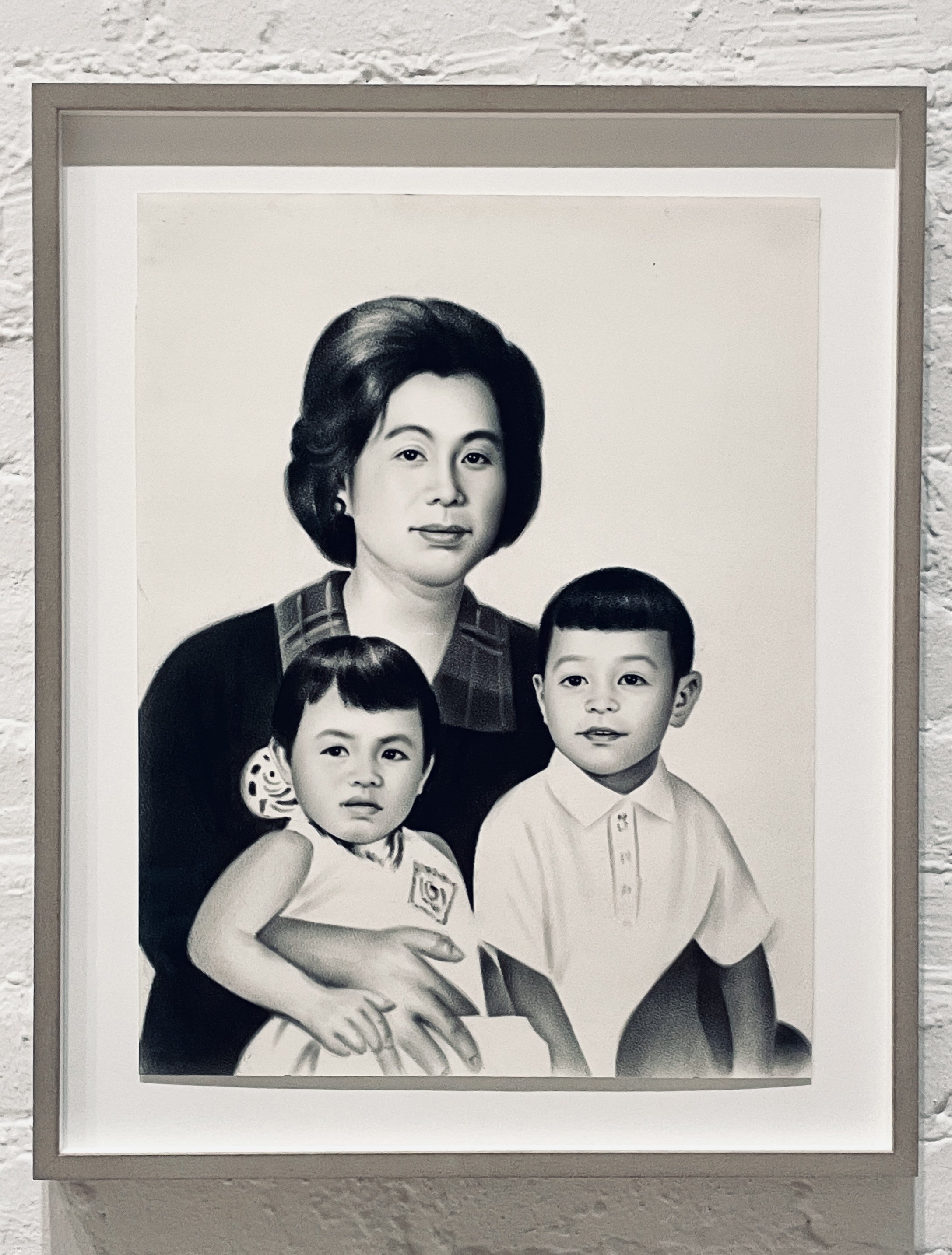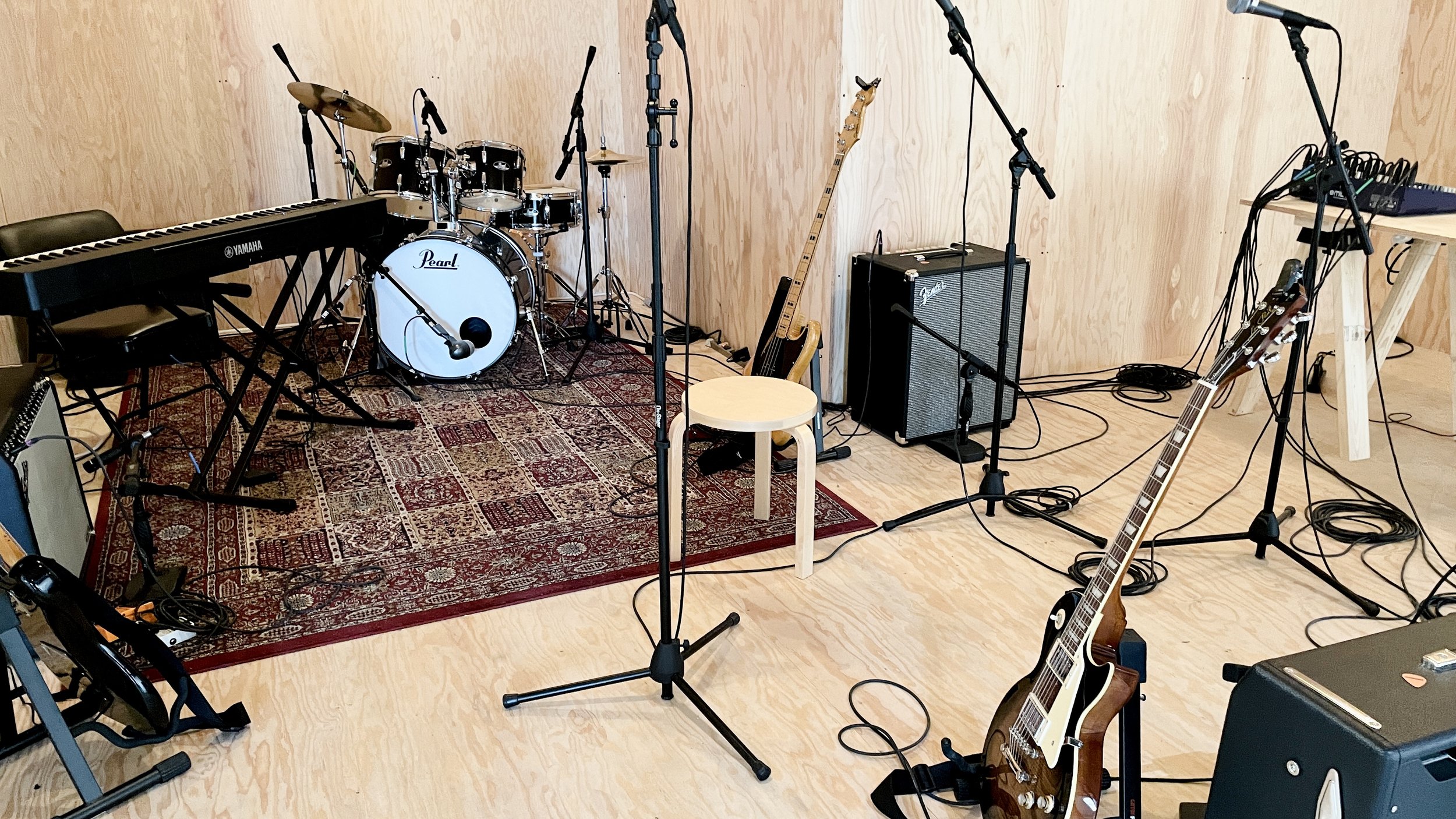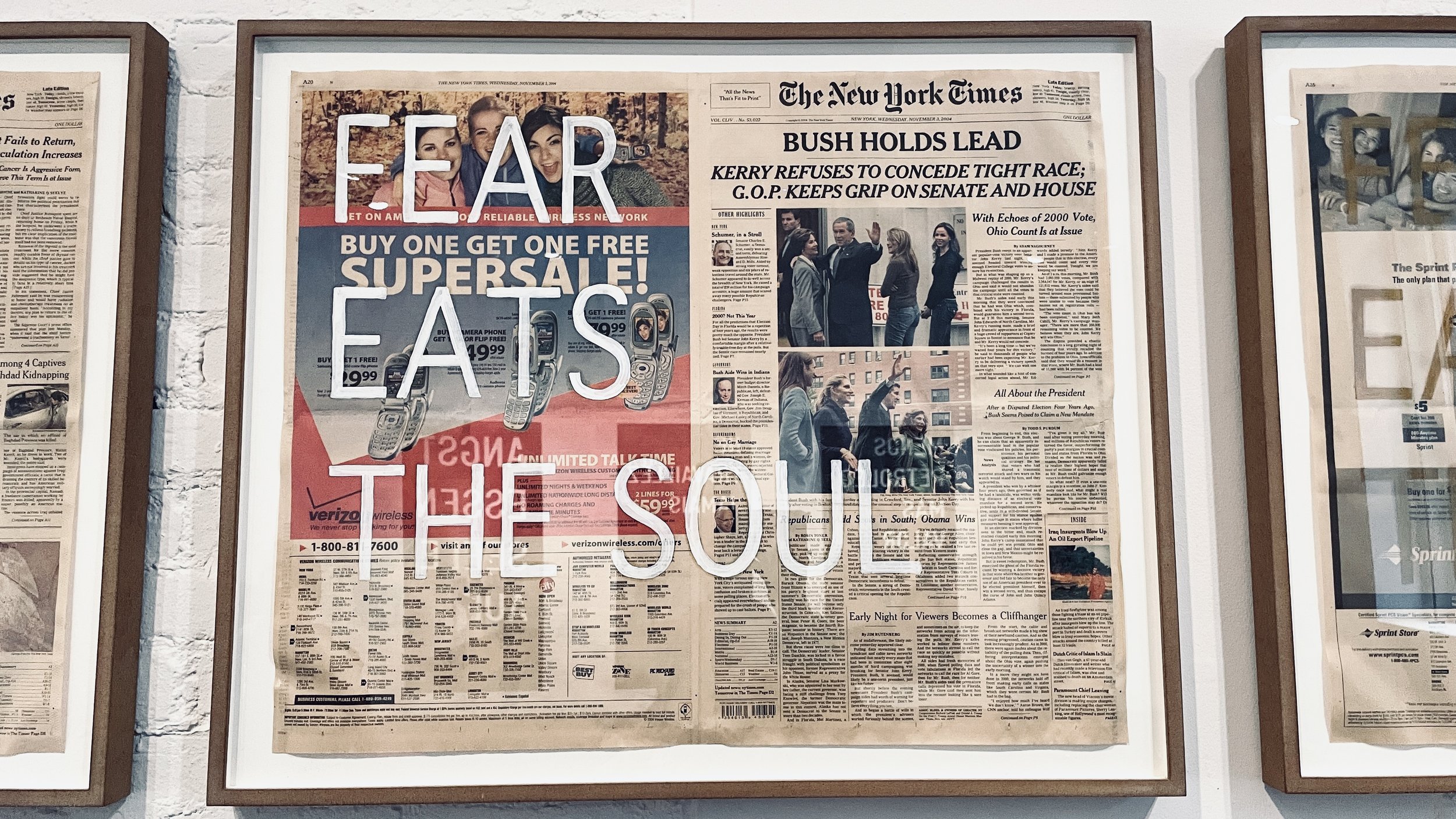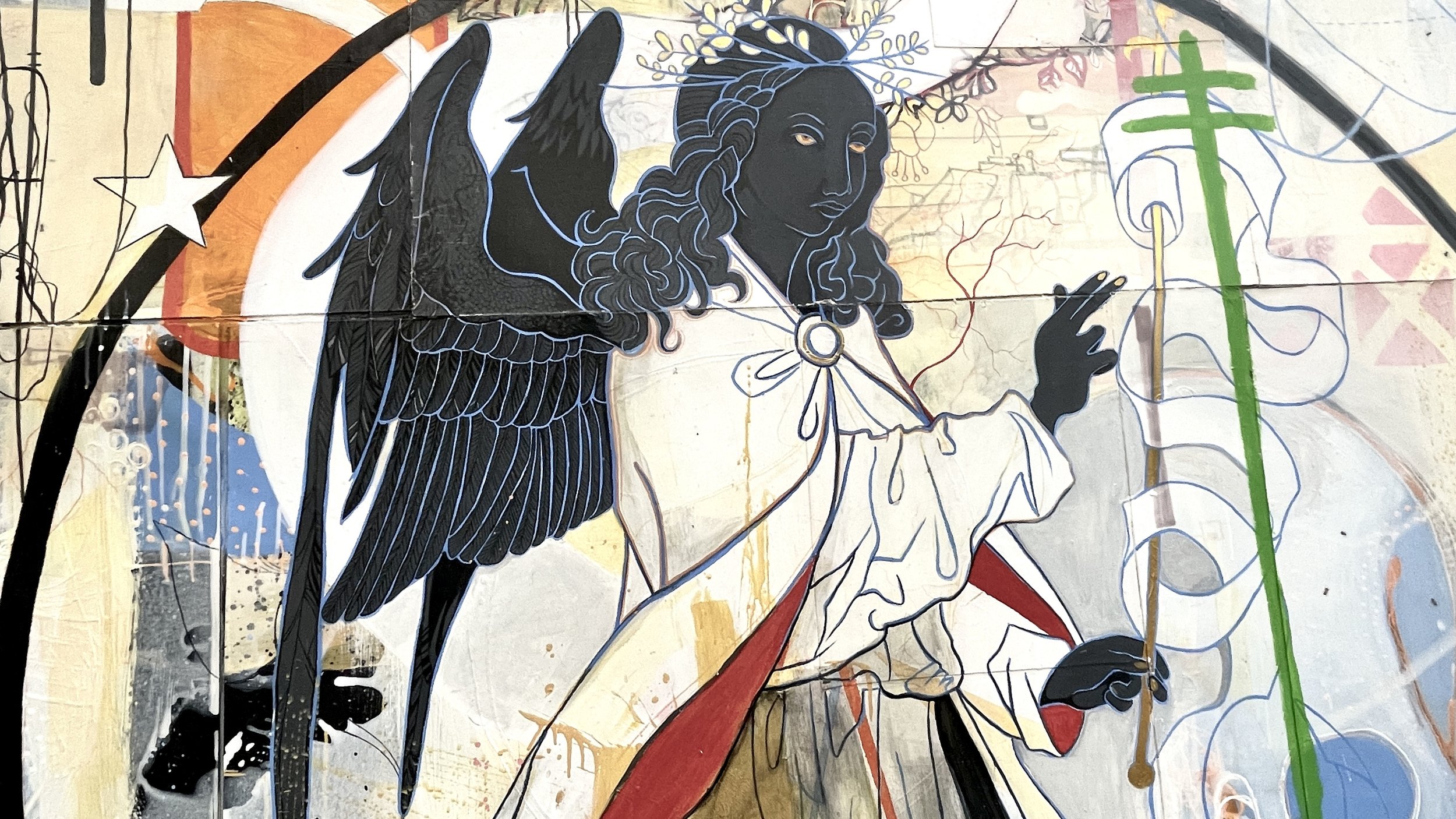A rainy day in the western end of queens; long island city
MoMA PS1, SCULPTURE SPACE NYC, MOSAIC ARTSPACEA pair of ceramic sculptures with iridescent glaze in the workroom of Sculpture Space NYC. Photograph by AWOL.
Beginning the day at MoMA’s PS1 to intake the current Rirkrit Tiravanija exhibition, A LOT OF PEOPLE, on display until March 2024, I was wide-eyed and bushy-tailed, ready to explore the manifested visions of an international artist. Born in Argentina and a Thai national, Tiravanija’s work transcends borders and illustrates a sense of ‘otherness’ in a way that is relevant to much of the modern experience of immigrants in the USA today, and peripherally translates to the experience of first-generation Americans such as myself. With over 100 pieces spread throughout the space at PS1, ranging from curated installations to black-and-white film projections with presentations of ordinary household objects, I was in awe of Tiravanija’s ability to work without bounds.
(up against the wall motherfuckers)
2023, charcoal, overhead projectors, and an archive of newspaper clippings
In a dominant display strewn along the walls of PS1’s first floor, this charcoal installation by Rirkrit is his most current work which directly mirrors our ongoing state of affairs here in America. Each character represents a different issue prevalent in today’s society and depicts issues with indoctrinating our youth through corrupt school systems and stripping away the history and experiences of underrepresented peoples of colour by removing access to the relevant literature.
An introduction to smell, taste, touch, and waste
An important element of Rirkrit Tiravanija’s exhibition at PS1 is the incorporation of community interaction, scheduled throughout the duration of his installation. As Rirkrit strives to invoke the senses through nostalgia and strategically placed ephemera, it is not hard to miss the effort toward illustrating the importance of family and his own experiences. The portrait below, displaying Rirkrit with his mother and sister, is in fact an appropriated artwork; one where the picture was commissioned by Tiravanija’s father and executed by another artist and then reframed here as part of an installation in NYC - and still, the value holds true.
Moving along the various installations throughout the floors of PS1, I was eager to explore the curated found objects like appliances and utensils, spices, and simple everyday items that make up the fabric of Tiravanija’s memory.
Similarly, I was curious about the rehearsal space I stepped into after exploring a bit more. Rirkrit’s, rehearsal space no.6, is an open invitation to play music and convene as a community. Here, visitors can drink tea, create sound, and become part of a live exhibition - I simply loved this call to action and opportunity to contribute to the art of Rirkrit Tiravanija.
I was very interested in the pieces nestled immediately above this textbox, and right below. The framing of newspapers with text overlayed is effective and certainly captivating. The history of America, the American people, and the many faces that make up the United States of America are everchanging, different, and specific. 2004 is nearly two decades ago and yet, fear is still alive among us as a nation. There’s so much more to say about this, but, now is not the time.
Rirkrit’s, The Map of the Land of Feelings, (above-right), is breathtaking. As a lover of details, fine lines, and movement through art, this panoramic piece captivated me from the first instant. It filled up the space so powerfully and is still graceful despite the explosion of information and bold lines which had the potential to override the minutia of the subtext. The cartography brought the artwork to life along with an ingenious palette that effortlessly flowed in contrast throughout.
Finally, another installation aimed toward engagement and social interraction (below), displays Rirkrit’s, Tomorrow is the Question, which has had a few iterations over the years. This version features a yellow graphic font laid across a black background. There have been versions with polished steel, no apparent graphic design, and a black-and-white motif design with wording. I was excited to see ping-pong incorporated into a museum exhibition, and really wanted to curve my serve - didn’t get a chance to play but it was still fun to watch.
A HISTORY OF THE HALLS AT Ps1
[Extracted from the MoMA PS1 website] “Located in what was once a thriving industrial enclave minutes from midtown Manhattan, PS1 has now become a cultural landmark in one of the fastest-growing, urban residential neighborhoods in the country. Decommissioned as a public school in 1963, the building was first secured from the city by the Institute for Art and Urban Resources Inc., a non-profit founded by Heiss in 1972 to provide studios and exhibition space in underutilized buildings across New York City.”
As I left the group to explore the halls of PS1, I was transported to a time that felt analog and long forgotten. I wondered what the walls had seen, I imagined the noises that littered the space and reflected on how much the world has changed in the short time I’ve been alive. It was surreal.
Looped holographic video embedded in the floor at PS1.
SCULPTURE SPACE NYC
Sculpture Space NYC is a very special place. Located in Long Island City, this ceramics studio is a creative wonder. The height of the interior allows for your mind to elevate and work in no way constricted by the physical surroundings. A calm, cool white envelopes the walls and encourages an artist’s mind to generate.
JAVARIA AHMAD
MASHQ
A SOLO EXHIBITION
If this doesn’t autoplay, please triple-tap the video to watch.
Mashq, on view from October 20th through November 18th, 2023 at Sculpture Space NYC
From the Sculpture Space NYC Instagram [@sculpturespacenyc], “[Javaria] has recently completed an MFA in Ceramic Arts from the New York State College of Ceramics at Alfred University. Her work is in the collection of Yinggie Ceramic Museum in Taiwan and the Alfred Ceramic Museum in New York. Currently, she is teaching ceramics at the National College of Arts in Lahore, Pakistan.”
The main objective of this visit was to see Javaria Ahmad’s first US solo exhibition at Sculpture Space NYC. An artist from Mumbai, Javaria has featured work internationally and has journied to the US to share her work. A focused effort toward the study of parenthetical gender roles and which illustrates the journey a typical Pakistani woman might endure on the road to marriage - Javaria’s work is executed with the most delicate touch, and imbedded with a deep history. Patriarchy is a such a word, notorious and shrewd, one doesn’t need to define the effects associated with a pattern so inherently rooted in imbalance. And yet, Javaria intentionally, and beautifully weaves her emotion and recollection of recorded history effortlessly into the ceramic wonder that is her art.
As we listen, she describes her process. With thought, Javaria chooses to atune her attention toward the everyday object and what it might represent. A spool can spin tales of women weaving cloth to form unbounded lines creating clothing and textiles. Still, even today, such tasks are overlooked for their labor goes unseen and unregarded. This is an issue common in many Asian households, diaspora alike.
The idea of marriage and the seeking of connection whether for love or money, is something many women of the last generations are familiar with, internationally and at home here. I understood this notion very well.
It was refreshing to see Javaria Ahmad, in the flesh. To witness her speak about how she fires a salt kiln to the way her community contributes to the creation process (start with gas, then add wood, three days to fire, stoke, three more days to cool down) was informational in the best way. I was overwhelmed with pride as I am in the end, a woman of colour.
Thank you, Javaria.
The facilities at Sculpture Space NYC are phenomenal - a ceramicist’s dream. With substantial industrial kilns to sheer room to explore creatively, this clay domain is a treasure nestled in the western end of Queens - Long Island City.
THE TOOLS OF A CERAMICISTAn important takeaway from this visit came in the form of Barry, a resident at Sculpture Studio NYC. He creates his work to sell retail as well as to fulfill creative expression. Featured is co-owner of Sculpture Space, Madga Dejose, who talks more about Barry’s position in the ceramic retail space as well as him being an artist who creates for the love of it all.
THE PHASES OF CERAMIC ARTSnapshots of the various forms of clay unstaged throughout Sculpture Space NYC
I ventured to ask a working artist if I could record her hands, and she agreed. Featured below is the technical styling of Mallory Korz [@mal_korz on Instagram], another resident of the Sculpture Space NYC.
CERAMIC LAB; A COMPOUND OF ALCHEMICAL COLLECTIONFrom the chemical stores at Sculpture Space NYC
And finally, a quick video of Sculpture Space co-founder, Andrew Kennedy showing us one of his immaculately extruded wide-mouthed clay pottery designs.
Sculpture Space NYC is a place for ceramic creation, community & culture. I look forward to my future return.
MOSAIC ARTSPACE
AUGUSTINE BOYCE CUMMINGS
“I like to be all encompassing as much as I can.”
Augustine Boyce Cummings is an artist who works in a grand scale, mixing both traditional and abstract elements in his creations. The composition of his works so elegantly hung throughout the high ceilings of the Mosaic Artspace in Long Island City are elevated in design [noun; an arrangement of lines or shapes created to form a pattern or decoration], straddling a line between expressive and technical application. His influences are drawn from his childhood growing up in the mid-western hemisphere of the United States and speak to his experiences and passion for community-driven activities like basketball and hunting, exploring the diversity between each scope. Working through the pandemic, Cummings chose to incorporate materials most readily available to him, and positioned these choices visually along the hall at Mosaic Artspace, denoting a sense of moving contrast between the pieces.



